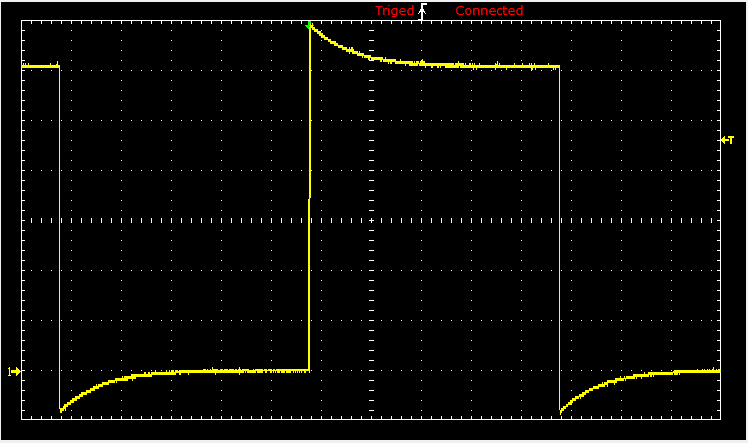Coordinates and Basis
Linearly independent
If S = {v1, v2, …, vn} is a set of vectors in a finite-dimentional vector space V, then S is called a basis for V if
- S spans V (so every vector from V is a finite linear combination of elementrs from S);
- S is linearly independent.
dimension
If S = {v1, v2, …, vn} is a basis for a vector space V, and
\[
{\bf v} = c_1 {\bf v}_1 + c_2 {\bf v}_2 + \cdots + c_n {\bf v}_n
\]
is the expression for a vector v in terms of the basis S, then the scalars c1, c2, …, cn are called yje coordinates of v relative to the basis S. The vecor c = ⟨ c1, c2, …, cn ⟩ in ℝn constructed from these coordinates is called the coordinate vector of v relative to S; it is denoted by
\[
\left( {\bf v} \right)_S = \left\langle c_1 , c_2 , + \ldots + c_n \right\rangle .
\]
Let T: V → W be a linear transformation from one vector space into another one, and let S = {v1, v2, …, vn} be a basis in the vector space V and Z = {w1, w2, …, wm} be a basis in the vector space W. The matrix A of a linear transformation T is a matrix for which
\[
T \left( {\bf a} \right) = {\bf A}\,{\bf a} , \qquad {\bf A} = \left[ T({\bf v}_1 ), T({\bf v}_2 ), \cdots , T({\bf v}_n ) \right] ,
\]
is called the standard matrix for the linear transformation T.
Example:
Let B = [[0,1,0], [1, 1, 1], [0, 0, 1]} be a basis in ℝ³ and let f: ℝ³ ↦ ℝ³ be a linear transformation with a standard matrix
\[
{\bf M} = \begin{bmatrix} 1& 2 & a \\ -3&0&1 \\ 0&1&1
\end{bmatrix}
\]
Let S = { x = [x1, x2, x3] ∈ ℝ³ | x1 + x2 + x3 = 0}. The value of 𝑎 ∈ ℝ such that f(2, 3, 1) ∈ S is 23.
We define two matrices:
B = {{0, 1, 0}, {1, 1, 0}, {0, 1, 1}}
M = {{1, 2, a}, {-3, 0, 1}, {0, 1, 1}}}
Det[M]
So 3𝑎 ≠ 5.
Then we define the basis in ℝ³ corresponding to matrix M:
M = {{1, 2, a}, {-3, 0, 1}, {0, 1, 1}}}
Det[M]
e1 = M.{0, 1, 0}}
e2 = M.{1, 1, 1}}
e3 = M.{0, 0, 1}
The vector v = f(2,3,1) is
e2 = M.{1, 1, 1}}
e3 = M.{0, 0, 1}
v = M.Transpose[{2*e1 + 3*e2 + e3}]
Finally, we choose 𝛂 to satisfy condition of being in S:
Simplify[Part[v, 1] + Part[v, 2] + Part[v, 3]]
So 𝑎 = 23
■
Example:
Let us consider a linear transformation f: V ↦ W, where V is a three-dimensional vector space ℝ³ with the basis
\[
B = \left\{ {\bf b}_1 , {\bf b}_2 , {\bf b}_3 \right\} , \qquad \mbox{with} \qquad {\bf b}_1 = \begin{pmatrix} 1 \\ 1 \\ 1
\end{pmatrix} , \quad {\bf b}_2 = \begin{pmatrix} 0 \\ 0 \\ 1
\end{pmatrix} , \quad {\bf b}_3 = \begin{pmatrix} 0 \\ 1 \\ 1
\end{pmatrix} ,
\]
and W is a three-dimensional vector space ℝ³ with the basis
\[
C = \left\{ {\bf c}_1 , {\bf c}_2 , {\bf c}_3 \right\} , \qquad \mbox{with} \qquad {\bf c}_1 = \begin{pmatrix} 0 \\ 0 \\ 1
\end{pmatrix} , \quad {\bf c}_2 = \begin{pmatrix} 1 \\ 2 \\ 0
\end{pmatrix} , \quad {\bf c}_3 = \begin{pmatrix} 1 \\ 1 \\ 0
\end{pmatrix} .
\]
The matrix of linear transformation f is given
\[
{\bf M} = \begin{bmatrix} \phantom{-}0 & \phantom{-}1 & 1 \\ -1& -1& 0 \\ \phantom{-}2 & \phantom{-}2 & 0
\end{bmatrix} .
\]
This means that
\[
f({\bf x}) = {\bf M}\,{\bf x} , \qquad {\bf x} = x_1 {\bf b}_1 + x_1 {\bf b}_2 + x_3 {\bf b}_3 , \qquad f({\bf x}) = y_1 {\bf c}_1 + y_1 {\bf c}_2 + y_3 {\bf c}_3 .
\]
Therefore,
\[
{\bf M}\,{\bf b}_1 = 2{\bf c}_1 -2{\bf c}_2 + 4{\bf c}_3 = \begin{pmatrix} 2 \\ 0 \\ 2
\end{pmatrix} ,
\]
\[
{\bf M}\,{\bf b}_2 = {\bf c}_1 = \begin{pmatrix} 0 \\ 0 \\ 1
\end{pmatrix} ,
\]
and
\[
{\bf M}\,{\bf b}_3 = {\bf c}_1 - {\bf c}_2 + 2{\bf c}_3 = \begin{pmatrix} 1 \\ 0 \\ 1
\end{pmatrix} .
\]
Let us consider a subspace S ⊂ V defined by the equation:
\[
S = \left\{ {\bf x} \in V : \ x_1 + 2 x_2 - 3 x_3 = 0 \right\} .
\]
■
